Highly Valued ABHM Exhibit Saved for Future Generations
Share
Explore Our Galleries
Breaking News!
Today's news and culture by Black and other reporters in the Black and mainstream media.
Ways to Support ABHM?
Griot: Dr. Fran Kaplan
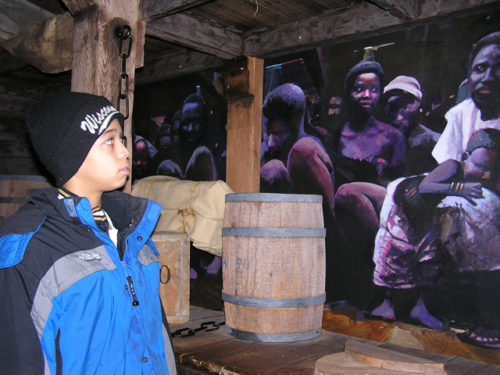
A young visitor to ABHM in 2005 inside the replica cargo hold of a slave ship in the Middle Passage exhibit.
When visitors to America’s Black Holocaust Museum’s former facility (1988-2008) are asked “what are your strongest memories of your visit?,” they most often mention two:
- Meeting Dr. Cameron, ABHM’s founder and listening to the story of the lynching he barely survived as a teenager, and
- Standing inside the slave ship cargo hold and listening to a Griot (oral historian/docent) describe the conditions of the Middle Passage.
Sadly, Dr. Cameron is no longer with us to tell his powerful story in person. And this week we almost lost the impactful slave ship exhibit as well.
Fortunately, Dr. Cameron gave many interviews during his lifetime – and left us a wonderfully detailed memoir of his experiences growing up under Jim Crow, including the lynching and his subsequent incarceration. And thanks to the generosity of the company in charge of demolishing our former museum building, the valuable slave ship exhibit was spared the wrecking ball and bulldozer.
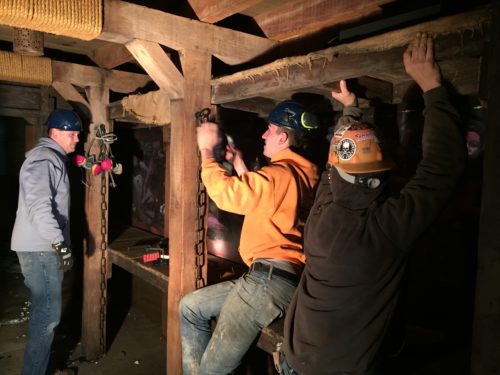 On April 21, 2017, just days before demolition was to begin, Greenfire Management Services sent three of their demolition workers to do something extraordinary: spend four hours carefully disassembling the large replica piece by piece so that it could be moved to a safe storage facility to await the completion of our new museum facility in 2018.
On April 21, 2017, just days before demolition was to begin, Greenfire Management Services sent three of their demolition workers to do something extraordinary: spend four hours carefully disassembling the large replica piece by piece so that it could be moved to a safe storage facility to await the completion of our new museum facility in 2018.
The replica of the ship was not removed from the building when ABHM was forced to abandon it in 2008, because there was insufficient time and funds to arrange for disassembly. All other exhibits not built into the walls, floors, and ceilings were moved to storage, but the ship, along with murals representing African life before captivity, had to be left behind. The abandoned building was subsequently vandalized and repeatedly flooded. All the walls and murals became covered in mold – with the miraculous exception of the walls, murals, and timbers inside the slave ship!
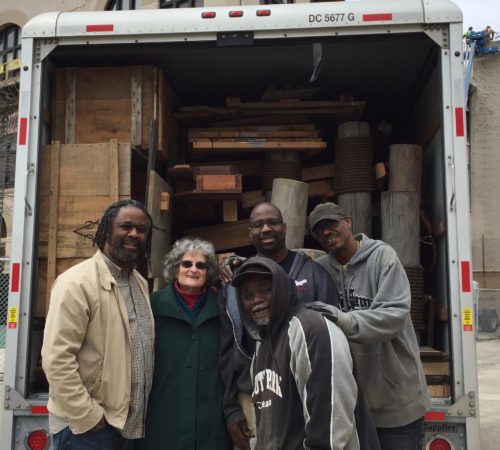
(L to R) ABHM’s Brad Pruitt and Dr. Fran Kaplan with movers David, Dave, and Frenchy, prepare to take the slave ship to a safe harbor.
ABHM consultant Brad Pruitt, who has for several years worked closely with Maures Development on the Historic Garfield Redevelopment Project where our new museum will be housed, directed the disassembly and moving teams in the successful effort to save the ship.
One of the movers, Frenchy, vividly remembered his visits to the museum as a young person. As he and the other men lovingly carried each piece from the ruined building to the truck, Frenchy said, with tears in his eyes, “I’m saving a piece of our history!”
Now in storage, the slave ship’s many pieces will eventually be reassembled like a puzzle, refurbished, and restored.
Visitors young and old to ABHM’s new facility will again be able to see, hear, visualize, and clearly understand the torment and deeply admire the strength and resilience of the African ancestors brought to this land in chains.
Please note: In order to return as a bricks-and-mortar museum, to restore its exhibits and create new ones, ABHM must raise $1.5 million by Spring 2018. If you wish to help, please consider making a tax-deductible contribution here.
Photo Gallery: The Rescue of ABHM’s Middle Passage Exhibit
A Voyage to Slavery: The Story of the Middle Passage
As if two simple words could contain the horror, the journey was called the Middle Passage. It was the middle let of a terse and efficient trade triangle where human torture and suffering were unimaginable.
Nearly 20 million Africans were captured during the largest forced migration in human history – spanning over 3 centuries. They were shacked two-by-two and herded onto vessels where as many as 600 other captives awaited the horrors of the voyage. It is impossible to determine how many people lost their lives during the crossing. Current estimates range from 1 million to 2.2 million.
Listen for the spirits of the ancestors. Their sad voices tell us how their story began.
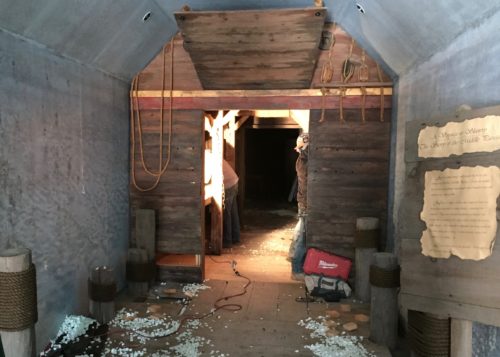
The entrance to the Middle Passage exhibit as it appeared in the ruined museum building on April 21, 2017. Visitors walked up a ramp made to resemble a pier, which was once lined with barrels and other cargo. They then entered the replica cargo hold. A curtain at each end once closed them in, as they stood between the shelves on which the captives were stacked.
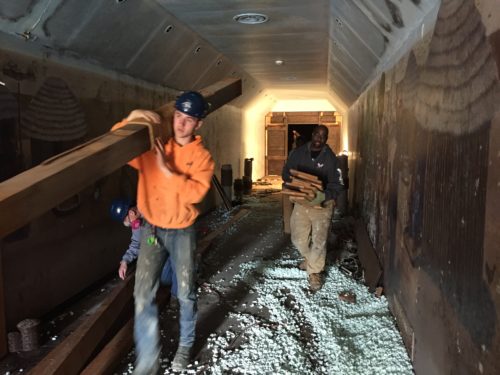
Workmen carry parts of the slave ship roof and floor past the ruins of the ruined mural of life in Africa before captivity that visitors passed and discussed before entering the Middle Passage exhibit.









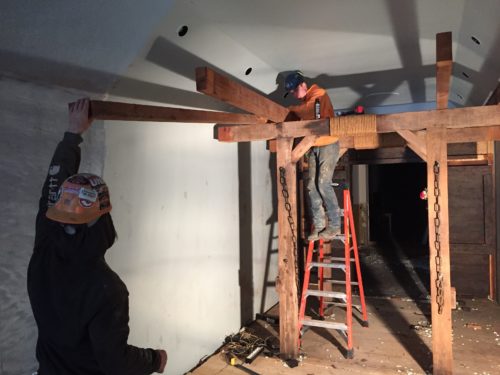

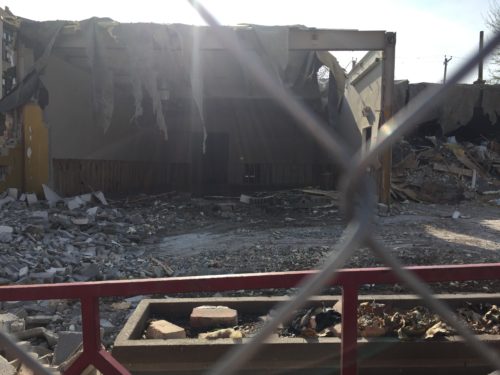
Comments Are Welcome
Note: We moderate submissions in order to create a space for meaningful dialogue, a space where museum visitors – adults and youth –– can exchange informed, thoughtful, and relevant comments that add value to our exhibits.
Racial slurs, personal attacks, obscenity, profanity, and SHOUTING do not meet the above standard. Such comments are posted in the exhibit Hateful Speech. Commercial promotions, impersonations, and incoherent comments likewise fail to meet our goals, so will not be posted. Submissions longer than 120 words will be shortened.
See our full Comments Policy here.